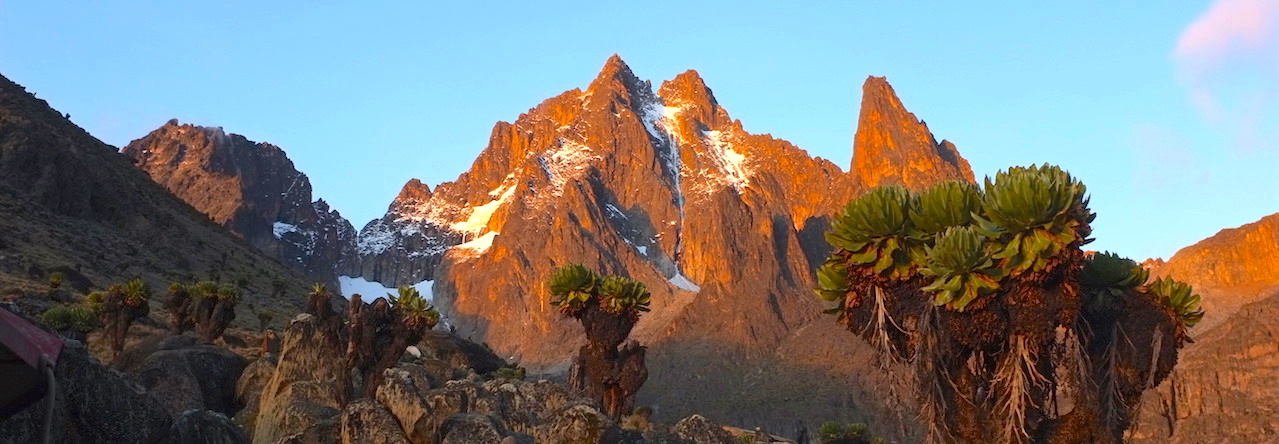Changes in the environment around Mt. Kenya and Mt. Kilimanjaro are having an effect on certain climbs.
Gate of the Mists
From Christmas to March, climbers should be aware of the increasing difficulties in traversing the Gate of the Mists. Parties doing the Normal Route now should now make crampons and ice axes a mandatory part of their equipement. Obviously this situation is tough on those climbing the harder South Face routes: who wants to carry ice gear up the Diamond Buttress routes? Currently there isn’t a good, solid, safe descent route down Batian itself.
During the last decade, in the June to October season, the South Face Route has become one of the most dangerous climbs on Mount Kenya. The reason why is simple. The Upper Darwin Glacier has virtually disappeared, leaving behind it blank, glazed rock slabs, which angle enough to hold covering snow. When viewed from the Teleki Valley or even from the base of the climb during these months, the appearence is seriously deceptive. The South Face Route looks to be in perfect condition. It is strongly recommended to avoid the South Face Route between June and October. It does not exist in the form of the original route.
Diamond Couloir and the Ice Window. Anyone attempting either the Diamond Couloir or the Ice Window between Christmas and March is stretching the limits of calculated risk.
Descent of Nelion
There is now a bolted abseil route off Nelion, close to the Normal Route. Originally to facilitate rescues, this descent route is also recommended for climbers. The bolts have been placed close enough for single rope abseils. The descent tries to avoid the Normal Route ascent and is marked in places with paint arrows. Care must still be taken to ensure not to get off route, particularly to avoid descending to far into the south face, or too far to the north of Baillie’s Bivvi. During the winter season (July, August, September), ice can cover some of the bolts. There is still a lot of loose rock in places.
Storms
Although storms on Mount Kenya do not match the level of those which frequent most other high peaks of the world, there has been a marked change in the severity of storms, particularly around August and September.
Rockfalls
With less rocks being held on or in glaciers, there has been an increasing incidents of rockfalls on climbing routes.
Point Lenana
The Lewis glacier has receded significantly, and has left behind steep ice, covered with small stones on the western flank of Point Lenana. The usual ‘tourist route’ up Point Lenana traverses across this ice slope, which although is in the lee of the prevailing wind, does require a high degree of competence on slippery and loose steep ground. The route is no longer as described in current Guide Books. This route relies on the stones being frozen onto the ice for traction, so anyone attempting this route during the warmth of the day should take great care. The alternative route from Austrian Hut would be to scramble up the summit ridge, and although this would be fully exposed to any wind, it would probably be safer. Point Lenana has become a much more serious undertaking over recent years and can be a dangerous place for the inexperienced and ill-equipped mountaineer.

Leave a Reply